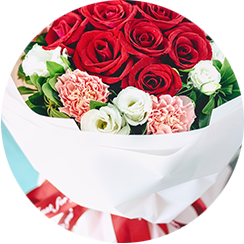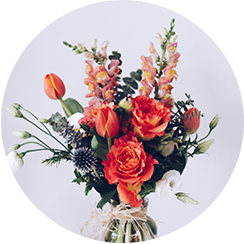Transform Your Space with an Orchid Care Guide
Posted on 25/05/2025
Transform Your Space with an Orchid Care Guide
Orchids are renowned for their exotic beauty and the touch of elegance they can bring to any interior. Whether you're an avid gardener or a new plant parent, learning how to care for orchids can truly transform your living space. This comprehensive orchid care guide will equip you with all the knowledge you need to ensure these stunning plants flourish in your home, enhancing both the ambiance and your well-being.
Why Choose Orchids to Enhance Your Home?
Orchids are much more than just visually appealing flowers. Thanks to their remarkable variety in shape, color, and fragrance, they can complement virtually any decor style. From minimalist modern to lush bohemian interiors, an orchid always fits in. Here are several reasons why adopting orchid care practices is an excellent investment for your home's ambiance:
- Air purification: Many orchids naturally filter indoor air, promoting a healthier living environment.
- Long-lasting blooms: Orchids offer weeks or even months of consistently beautiful flowers, outlasting most cut flowers.
- Stress reduction: Studies show that having plants like orchids nearby reduces stress and increases productivity.
- Symbolism: Throughout history, orchids have represented luxury, love, beauty, and strength.
- Low maintenance: Once you master the basics of orchid care, they're surprisingly easy to look after!

Understanding Orchid Types for Different Spaces
To maximize the transformative impact of orchids on your space, it's essential to choose varieties that best suit your setting and lifestyle. Here are some popular orchid varieties for indoor environments:
- Phalaenopsis (Moth Orchid): Best for beginners, known for their resilience and graceful blooms.
- Cattleya: Famous for their intense colors and large, fragrant flowers--ideal as a standout centerpiece.
- Dendrobium: A versatile option that offers numerous flowers per stem and adapts easily to home conditions.
- Oncidium (Dancing Lady): Noted for their abundant, cheerful blossoms and cascading arrangements.
- Paphiopedilum (Lady Slipper): Appreciated for their unique pouch-shaped flowers and shade tolerance.
Choosing the Perfect Orchid for Your Room
Not all orchids thrive the same way. Consider factors such as light, humidity, space, and temperature before deciding which variety to bring home. For a bright window sill, a sturdy Phalaenopsis is perfect. For a low-light nook, a Paphiopedilum will flourish. Understanding this orchid selection guide can help you create a balanced, visually pleasing plant arrangement.
The Fundamentals: Essential Orchid Care Guide
1. Light Requirements for Orchids
Orchids have specific light needs, making proper placement crucial. Most orchids prefer bright, indirect sunlight. Direct midday sun can scorch the leaves, while too little light prevents blooming. For an eye-catching spot, place your orchid near east or west-facing windows filtered by a sheer curtain.
- Phalaenopsis: Enjoys medium-bright, indirect light. Leaf tips turning yellow means too much light.
- Cattleya: Needs brighter light than most. South-facing windows are ideal.
- Paphiopedilum: Thrives in lower light conditions, making them great for offices and shaded rooms.
2. The Art of Watering Orchids
One of the most common mistakes in beginner orchid care is overwatering. Orchids need less water than the average houseplant. Always check if the potting mix is dry before watering again. Remember:
- Water orchids every 7-10 days during active growth, and reduce in dormancy.
- Use room-temperature, filtered water to avoid mineral build-up.
- Never let orchids sit in standing water. Ensure your pot has proper drainage.
- Increased humidity can reduce the need for frequent watering.
3. Humidity and Airflow
Orchids flourish in humidity levels between 40%-70%. If you live in a dry climate, try these tips to maintain adequate moisture:
- Use a humidity tray with pebbles beneath the pot.
- Mist the leaves lightly with a spray bottle--avoid soaking the blooms.
- Group plants to create a naturally humid microclimate.
- Ensure good airflow by keeping orchids in a well-ventilated area.
4. Temperature Needs for Thriving Orchids
Temperature control is essential for successful orchid care at home. Most household orchids prefer:
- Daytime: 65-80?F (18-27?C)
- Night: 55-65?F (13-18?C)
5. Best Potting Mediums and Repotting Tips
Orchids require specialized potting media allowing roots to breathe. Never use regular potting soil, as it may suffocate the plant. Optimal options include:
- Bark chips (fir, pine, or redwood)
- Sphagnum moss
- Charcoal and perlite blends
6. Feeding Your Orchid: Fertilization Guide
Regular feeding supports lush leaves and impressive blooms. Use a balanced, water-soluble orchid fertilizer (20-20-20) during the growing season. Feed every two to four weeks and reduce during winter dormancy. Remember to water your orchid before applying fertilizer to avoid root burn.
7. Pruning and Maintenance
Proper maintenance keeps your orchid healthy and visually pleasing. After blooms fade, prune the flower spike about an inch above a node to encourage re-blooming in certain varieties, such as Phalaenopsis. Remove any dead or yellowing leaves to prevent disease.
Orchid Placement Ideas to Elevate Any Room
Now that you know how to care for orchids, let's explore creative placement ideas that will truly revamp your space:
- Dining Room Centerpiece: A large Cattleya orchid in a decorative bowl will impress guests and create a luxurious dining atmosphere.
- Bathroom Sanctuary: Use humidity-loving Paphiopedilum or Phalaenopsis orchids to add tranquility to your bathroom retreat.
- Home Office Revival: Place an Oncidium orchid near your workspace for a touch of color and a productivity-boosting environment.
- Bedroom Oasis: Understated orchids on the nightstand promote relaxation and serenity.
- Living Room Drama: Create a focal point with a tall orchid arrangement on a mantle or side table.
Design Tips for Integrating Orchids into Decor
- Choose pots and containers that complement your interior style--think ceramic, glass, or woven baskets.
- Use varying heights and groupings of two or three orchids for visual interest.
- Pair orchids with green foliage plants to create a lush, indoor jungle effect.
- Mix different colors and types of orchids for diversity and drama.
Advanced Orchid Care Techniques for Enthusiasts
Ready to take your orchid care to the next level? Here are some advanced techniques to ensure stunning blooms all year round:
- Propagation: Experiment with dividing mature orchids or using offshoots ("keikis") to grow your collection.
- Bloom Boosting: Mimic natural seasonal light/dark cycles and temperature drops to stimulate flowering.
- Pest Management: Inspect regularly for signs of mealybugs or scale. Remove pests with a cotton swab and isopropyl alcohol.
- Disease Prevention: Always sterilize pruning tools, avoid overcrowding, and provide good ventilation.
- Experiment with mounting: Consider mounting epiphytic varieties on bark plaques for an authentic, artistic display.

Common Orchid Problems and Troubleshooting Guide
Even with meticulous orchid plant care, issues can arise. Here's how to diagnose and resolve common orchid problems:
- Yellow Leaves: Can indicate overwatering or excessive sunlight. Adjust watering and relocate to indirect light.
- Root Rot: Results from waterlogged conditions. Remove unhealthy roots and repot in fresh, well-draining media.
- Stubborn Non-Blooming: Move your orchid to a brighter spot and reduce nitrogen-rich feeding in favor of bloom boosters.
- Wrinkled or Droopy Leaves: Indicates dehydration or under-watering. Check root health and watering frequency.
- Pest Presence: Isolate affected plants and treat promptly.
Frequently Asked Questions About Orchid Care
- How often should I water my orchid? Generally, every 7-10 days depending on humidity, temperature, and potting medium.
- Why are my orchid's leaves turning black? This can indicate fungal infection or overwatering. Allow the medium to dry and trim away any damaged parts.
- How can I make my orchid rebloom? Provide a temperature difference of 10?F (6?C) between day and night for a few weeks, and use a balanced fertilizer.
- Do I need to repot my orchid after purchase? If the roots are healthy and the potting medium is fresh, you can delay repotting for 6-12 months.
Turn Your Home into an Orchid Paradise: Final Thoughts
Orchids are more than ornamental plants--they are lifestyle enhancers that transform indoor spaces with grace and color. By crafting the right environment and following expert orchid care tips, you can enjoy their beauty year-round and elevate the energy of any room in your house. Remember: successful home orchid care is about balance, attention, and a bit of patient observation.
Start with one orchid variety that matches your environment. As your confidence grows, branch out and experiment with new types and arrangements. Soon, you'll find that a well-cared-for orchid is the crown jewel of your decor.
Bookmark this orchid care guide as your trusted resource for creating a vibrant, nature-inspired sanctuary. Happy growing!
Latest Posts
Dive Into 8 Lesser-Known Sunflower Facts That Will Captivate You
Discover the Flora That Harmonizes With Your Personality
Expert Advice on Prolonging Poinsettia Life





